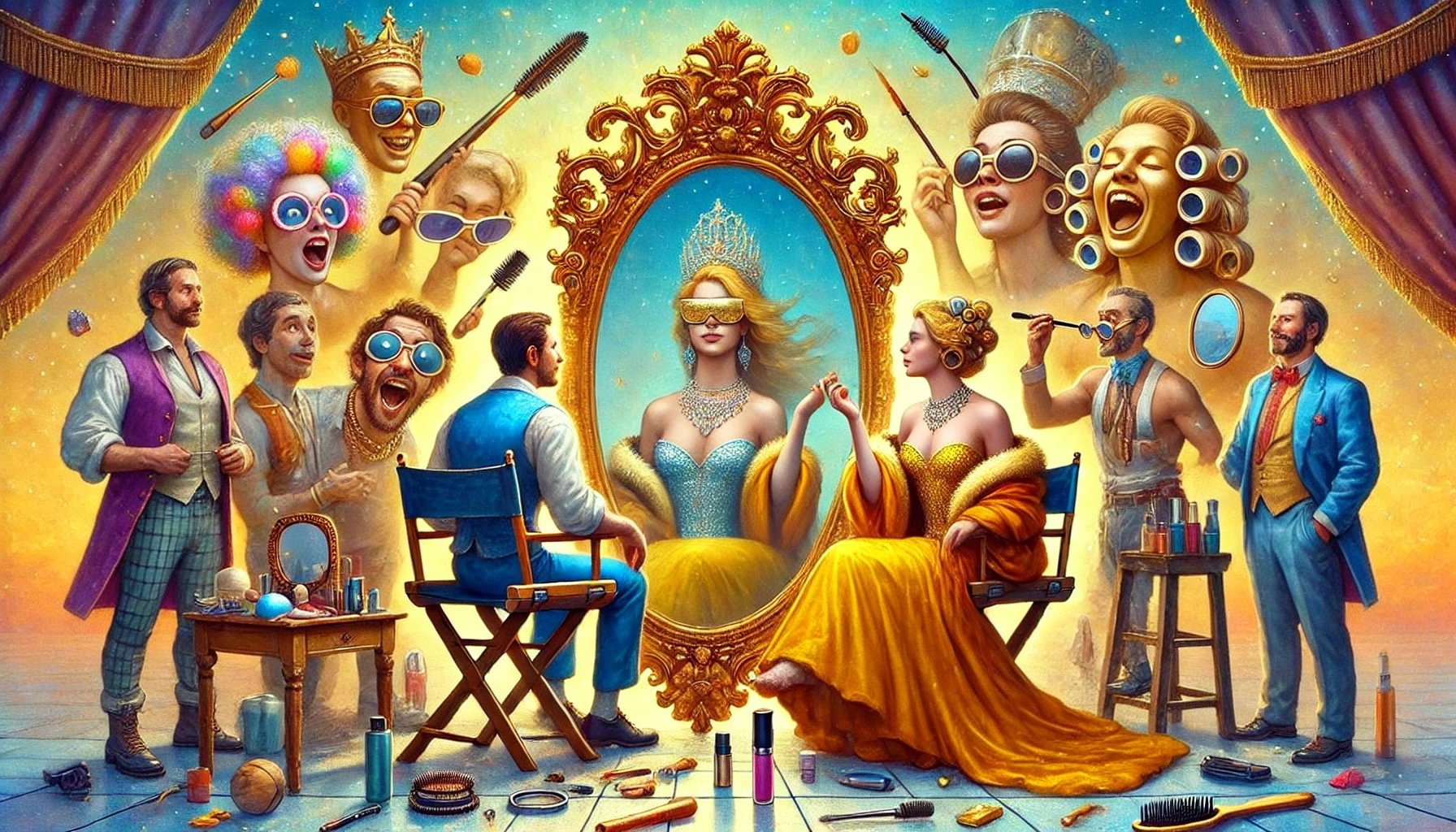You’re So Vain
You probably think this article's about you. It is. You and everyone.
We are all vain. Vanity is not merely an individual trait; it is a collective phenomenon, deeply embedded in the way society structures itself. At its core, vanity is a response to social conditioning, a survival strategy in a world that enforces strict hierarchies of appearance.
Society creates a narrow band of acceptable appearance. If you fall outside of that band, you are excluded. Within that band, there are many sub-bands that determine how society treats you. Those deemed beautiful by prevailing standards are pedestaled, receiving unearned kindness, admiration, and favors simply due to unconscious programming. Conversely, those considered unattractive by these same standards find themselves subtly or overtly shunned. The wheels of social interaction do not turn as smoothly for them.
Those who fit within the "reasonably good-looking" range move more freely, without extreme bias, but they face an additional challenge—they must remain within the band without being seen as precisely average. If they fall too close to the center, they are perceived as bland and forgettable. Much of fashion and personal styling, then, becomes an attempt to differentiate from the precise average while ensuring one does not step outside the socially-acceptable range.
Those in the higher bands of beauty live in constant fear of baldness, sagging, wrinkles, and other signs of aging. They subtly sense that any significant change in their appearance may lead to a decline in social standing, causing them to grasp at youth through skincare routines, cosmetic procedures, and even surgical interventions. The fear of falling from grace is so deeply embedded that many go to great lengths to preserve their place in the hierarchy, often without realizing that they are prisoners of the very system that once elevated them.
These beauty hierarchies, though deeply entrenched, are not fixed. Throughout history, the standards of attractiveness have shifted dramatically, exposing their arbitrary nature. In some eras, fuller bodies symbolized wealth and prosperity, while in others, thinness became the ideal. Features that were once celebrated—pale skin in women and full beards in men during the Victorian era, for example—later fell out of favor as society redefined what was desirable. Even today, different cultures hold distinct beauty ideals, proving that what is considered 'attractive' is nothing more than a shifting construct rather than an absolute truth.
For those truly different by society’s standards—whether due to deformities, gender identity, disabilities, or any other deviation from the norm—exclusion takes on a sharper edge. Modern society swings between two pendulums: the outright hostility towards marginal individuals in certain circles, and the polite maxim of "not staring" in other circles. The latter creates an eerie social phenomenon in which those who do not conform are neither acknowledged nor integrated but instead carefully ignored. This enforced invisibility is a subtler cruelty. If society stopped perceiving disabled people, for example, as “other”, the compulsion to either stare or carefully look away would vanish. They would simply be seen, as human as anyone else.
Vanity, then, is not simply about self-obsession. It is about the deeply ingrained fear of falling out of the acceptable band and losing the social lubricants that make daily life easier—the friendly smiles, the willingness of strangers to help, the ease of being included. People sense, often unconsciously, that their appearance dictates their social standing, and they adjust accordingly. The fear of exclusion drives countless behaviors, from obsessing over personal presentation to engaging in the latest trends that ensure continued belonging.
Living Outside the Bands
To transcend this paradigm, one must cultivate sovereignty—the unwavering knowing that one’s worth is inherent and not dictated by external perception. This is challenging, as social conditioning begins early, reinforcing the belief that beauty equates to value.
Those who successfully step outside this system do so by:
Shifting from external validation to internal alignment. When people anchor into their truth, their energy shifts in a way that naturally attracts those who resonate with them.
Embracing radical self-acceptance. True beauty emerges from presence, confidence, and authenticity. The more someone is at peace with themselves, the more magnetic they become—not in a way that fits into society’s mold, but in a way that transcends it.
Choosing relationships and communities that operate beyond superficial hierarchies. For those who surround themselves with people who see beyond appearance, the fear of exclusion dissipates.
How Society Would Transform
If society collectively deconstructed these biases, profound shifts would occur:
Social energy would flow more freely. Warmth and kindness would no longer be distributed based on arbitrary appearance-based hierarchies.
Fashion and beauty would become true expressions rather than survival strategies. People would dress and present themselves based on joy and authenticity rather than fear of exclusion.
The stigma around difference would dissolve. Those outside conventional beauty norms would no longer be fetishized or erased but simply seen.
Human connection would become more authentic. Without the underlying structure of appearance-based social sorting, people would engage based on resonance rather than unconscious social calculations.
What It Would Take to Get There
Education on Social Conditioning. Recognizing these biases is the first step toward dismantling them.
Experiential Exposure to Difference. The more people engage with those outside their usual beauty band, the more natural it becomes to see humanity beyond superficial markers.
A Redefinition of Beauty Itself. While beauty is often framed as subjective, society enforces rigid standards. If beauty were instead defined as the radiance of presence, joy, and truth, the power of the old system would collapse.
Ultimately, this transformation hinges on one question: do we wish to remain imprisoned by the unconscious structures of vanity, or do we choose a world where everyone is truly seen? True freedom begins when we stop following the rules of a game that we never agreed to play.
